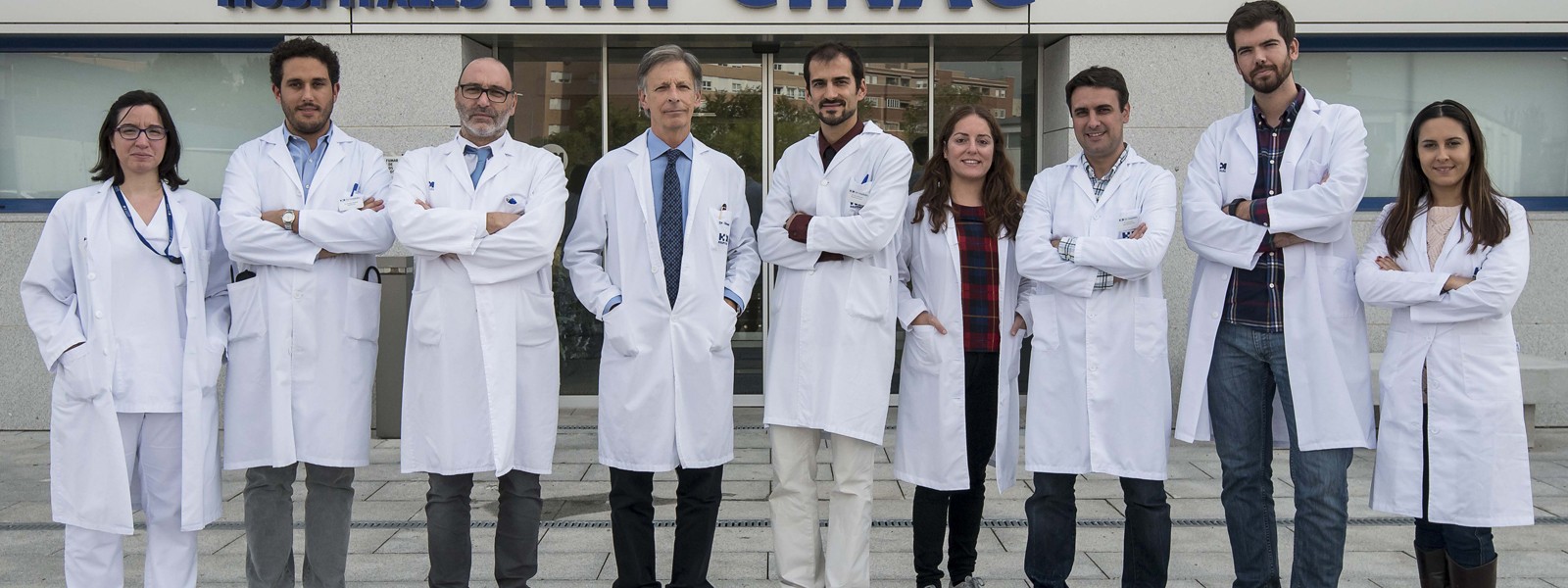DIRECTOR
RESEARCH TEAM
Javier Blesa de los Mozos, Inés Trigo Damas, José Ángel Pineda Pardo, Raquel Márquez López, Álvaro Sánchez Ferro, Ledia Fernández Hernández and Michele Dileone, Fundación de Investigación HM Hospitales; and Raúl Martínez Fernández, Hospital Universitario HM Puerta del Sur.
COLLABORATING INSTITUTIONS
DESCRIPTION
Parkinson´s disease (PD) is a progressive and disabling neurodegenerative disorder that affects over 1 million people in Europe. No neuroprotective treatment is available. The earliest and most severe cell loss in PD takes place in the ventrolateral tier of the substantia nigra pars compacta (SNpc) leading to dopamine depletion in the motor putamen.
The initial motor manifestations are typically restricted to one body segment (hand tremor, leg dragging…). Intra-cellular aggregation of α-syn form Lewy bodies, which is consider a major histological hallmark of PD. α-syn is known to assemble into oligomeric and fibrillar toxic aggregates. In a multi-disciplinary recent study we found in mice and monkeys that LBs extracts from post-mortem tissue can spread and cause neuronal degeneration, providing a naturalistic model of PD.
Focal ultrasound (FUS) is a technique we used routinely in patients for inducing restricted therapeutic lesions and facilitating intracerebral drug uptake; it has recently been shown to remove β-amyloid deposits from the brain by increasing microglia activation in a mice model of Alzheimer´s disease via microglial activation. We put forward the hypothesis that toxic α-syn may enter or be generated distant from the primary site of pathology (SNc) but have especially affinity to hit these neurons, explaining the selective regional vulnerability of PD.
Our Project has experimental and clinical objectives:
I. Experimentally, to demonstrate that exogenous (to the nervous system) and endogenous (peripheral nerve, brainstem, cortex), but extra-nigral administration of α-synuclein derived from human PD patients preferentially damage the most vulnerable SNc ventrolateral tier neurons. And that treatment with FUS blocks the aggregation process.
II. Clinically, to assess a putative body pattern for the initial focal motor manifestations and its ratio of progression, in correlation with nigro-striatal deficit established by PET with 18F-Dopa

